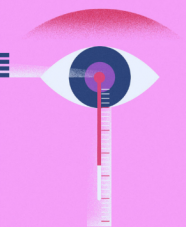Introduction
Recent advances in wearable electronics, combined with wireless communications, have triggered immense interest in the development of health monitoring and/or treatment technologies. The increasing demand for user-friendly health-assistive devices has led several companies to venture into developing smart technologies, one of which is the smart contact lens.
With the advent of technology advancements, contact lenses have found a wide range of applications in therapeutics, diagnostics, etc. Early research in this area employed opaque and brittle components to enable the operation of electronic devices, thus hindering the user’s line of vision and posing a potential threat of damaging the eye, apart from causing discomfort. Hence, soft lenses such as those made of poly (2-hydroxyethyl methacrylate) (pHEMA), polyvinyl alcohol (PVA), polyacrylamide (PA), polyethylene terephthalate (PET) or polydimethylsiloxane (PDMS) are commonly used in integrating sensing technology due to the user’s comfort and high oxygen permeability. This paper broadly categorizes smart contact lenses based on their applications and technologies, also presenting some recent technology advancements, with companies and institutes working in the area included.
Smart contact lens for health monitoring:
There has been a long-felt need for a non-invasive biometric sensor for painless and instant / real-time diagnosis of chronic and widely prevalent medical conditions. The smart contact lens may be used as a single-use disposable contact lens, or for use over a longer period, which would enable continuous monitoring of biomarkers for real-time monitoring of diseases. These could be fluorescent, holographic, colorimetric, or electrochemical-based technologies.
Fluorescence-based sensing technology[1] involves the absorption of electromagnetic radiation of a specific wavelength by an excitable fluorophore and subsequent emission of photons with longer wavelength. Early smart contact lenses based on fluorescence-based sensing technologies involved the development of a biosensor for glucose detection through immersion in tear fluid, and using tetramethylrhodamine isothicyanate concanvalin A (TRITC-Con A) and fluorescein isothiocyanate dextran (FITC-dextran) encapsulated within hydrogel spheres that were embedded and immobilized in polymerized Nelfilcon A (PVA-based) within a contact lens mold. As glucose diffused into the spheres, the FITC-dextran molecules shifted away from TRITC-Conv A, thus resulting in decreased Forster Resonance Energy Transfer (FRET) and increased fluorescence intensity. This biosensor could track the concentration of blood glucose of patients over three hours. However, this technique seemed to have a lag time of a few minutes between the blood glucose of the patients and the result from the sensor.
Holographic sensing technology[2] has found application in the detection of health conditions. Holographic elements in contact lenses are commonly used to focus incoming light. These elements are embedded in contact lenses as a means to detect various chemicals in the eye. When the holographic elements come into contact with a particular chemical, it causes the contact lens to change color. The holographic sensing technology was envisioned to measure glucose in tears for people with diabetes. However, the major shortcoming of this technology is the inability to accurately quantify the measured chemical.
Google had been working on a contact lens that could help people with diabetes by making it continually check their glucose levels[3],[4],[5]. The idea was originally funded by the National Science Foundation and was first brought to Microsoft. In 2014, Google announced a partnership with Novartis’ Alcon unit to develop the glucose-sensing smart contact lens. The company Verily, an Alphabet subsidiary, which was part of Google till 2015, was the most aggressive in bringing electronics to contact lenses for detecting blood sugar in tears; but in 2018, announced that it had discontinued the project because of the lack of correlation between tear glucose and blood glucose. Google holds patents (for e.g., US9320460, US9289123) for technologies involving use of contact lenses with sensors that sense an analyte such as glucose, alcohol, histamine, urea, lactate, cholesterol, or electrolyte ions such as sodium, potassium, calcium and magnesium in the tear fluid; and contact lenses for measuring an intraocular pressure.
Recent research has led to the development of flexible micro-LED arrays for use in wearable light sources and high tech surgical gloves. The small size, low current and low energy consumption of LEDs have led to their use in various medical applications.






 lenses that can prevent dry eyes through a self-moisturizing system that maintains a layer of fluid between the contact lens and the eye, using an electro osmotic flow mechanism that causes the liquid to flow when a voltage is applied across a hydrogel, which is a charged surface.32 The contact lenses are wirelessly powered using magnesium-oxygen batteries and enzymatic fructose-oxygen fuel cells, which can be mounted directly on the charged contact lenses. However, further research is needed to develop improved self-moisturizing contact lenses that are tougher and can be operated at smaller currents.
lenses that can prevent dry eyes through a self-moisturizing system that maintains a layer of fluid between the contact lens and the eye, using an electro osmotic flow mechanism that causes the liquid to flow when a voltage is applied across a hydrogel, which is a charged surface.32 The contact lenses are wirelessly powered using magnesium-oxygen batteries and enzymatic fructose-oxygen fuel cells, which can be mounted directly on the charged contact lenses. However, further research is needed to develop improved self-moisturizing contact lenses that are tougher and can be operated at smaller currents.




